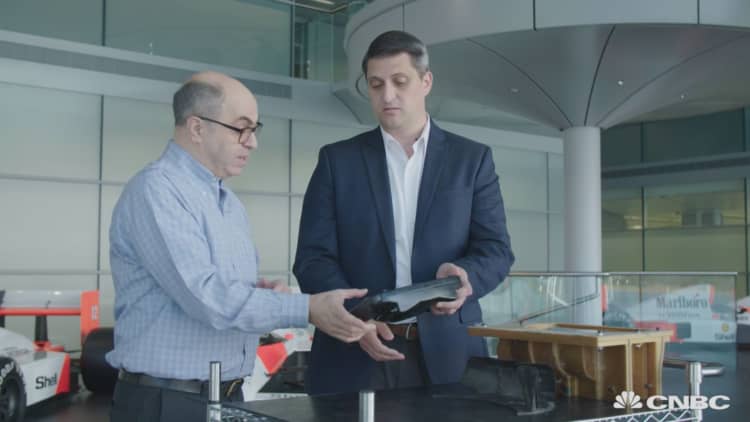
What do electric guitars, drones and prosthetic limbs have in common? The answer may not be immediately obvious, but it's that various bright minds have used 3-D printers to produce versions of these objects.
Minnesota-headquartered Stratasys specializes in 3-D printing. Scott Sevcik, vice president of its manufacturing solutions business unit, told CNBC that the company had two core technologies within the additive manufacturing, or 3-D printing, environment: fused deposition modelling (FDM) and PolyJet.
Sevcik described FDM as a technology "in which we take durable thermoplastic materials and … extrude them layer-by-layer to create a part that is able to be used for applications ranging from prototyping, to tooling, to production parts." PolyJet, Sevcik said, blended different materials "droplet by droplet to create very beautiful, colourful, complex parts that are ideal for advanced prototyping applications."
Sevcik said that Stratasys had over 18,000 customers. "We work with a wide, wide variety of different industries and different types of customers. Some of our most significant when it comes to manufacturing tend to be in the aerospace industry, in the automotive industry… Airbus and Boeing are both partners that have adopted our technology."
In January last year, McLaren Racing, which runs one of the world's most iconic Formula One teams, signed a four-year partnership with Stratasys. At the time, McLaren said that the partnership would see Stratasys supply them with a "suite of 3-D printing and additive manufacturing solutions."
Citing one example of how the two companies were working together, Sevcik said that 3-D printing could be used in the development of steering wheels for F1 cars. "What you have on a steering wheel … is a lot of different controls, a lot of different buttons and knobs," he said.
He explained that being able to print a wheel to show the look and feel of it — and then receive feedback from drivers — enabled teams to create a final design rapidly and move to the production stage without a lot of iteration.
In terms of the broader benefits that 3-D printing could offer manufacturers, Sevcik said that the speed of the process offered advantages. "In some cases we'll save just seconds in an assembly process but in a high volume industry those seconds can add up to weeks and months of labor that's saved in the process," he said.
Disclosure: CNBC has a partnership with McLaren.




